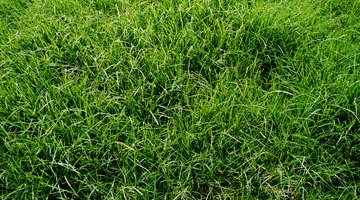Septic Lagoon Maintenance
In areas where no central sewage system is available and the soil does not permit the installation of a septic system with leach fields, a waste lagoon may be the answer. Found mostly in rural areas, these residential open-air sewage pits contain human and organic household waste.

When designed correctly, the sewage in a lagoon quickly decomposes through exposure to sunlight and oxygen. Proper maintenance of a septic lagoon ensures reliable waste disposal for years.
Control Vegetation
Planting a hardy ground cover around the lagoon embankment will reduce soil erosion into the lagoon. If you plant grass, choose a low-growing variety, such as buffalo grass, to reduce mowing.
Trim or remove dense bushes around the perimeter of the lagoon. Air must flow freely over the surface of the wastewater to encourage the proper microorganism activity that decomposes the waste. Avoid planting large trees near to the lagoon that will lose their leaves in the winter and may cover the surface of the wastewater.
Limit Waste
Although a septic lagoon will efficiently treat human sewage, don’t overburden the natural system by flushing items that do not biodegrade quickly, such as tampons, sanitary napkins, paper towels, and plastic wrappers. Grease, drained down a kitchen sink, may clog in the pipe feeding the lagoon or may form a layer on top of the wastewater, reducing natural airflow.
Detergents, household cleaners, chemicals, and anti-bacterial soaps may kill the helpful bacteria that decompose waste material in the lagoon. When this occurs, the lagoon may become smelly. Find an alternate method for disposing of disinfectants, herbicides, pesticides, and other chemicals. Use biodegradable laundry detergent and dish soap.
Safety
Creating a barrier between your lagoon and the rest of your land will prevent large animals or children from entering the lagoon. Your local building authority can tell you if there are codes that regulate the type of fence you may install around your lagoon. The fence will need a gate large enough to allow mower access to the interior bank of the lagoon.
Treat a lagoon annually to prevent mosquito breeding. Small disks, called “dunks,” are available from your local county extension agency for treating the lagoon water.
Periodic Maintenance
Occasionally, seeds from invasive plants or trees may germinate and quickly take root in a lagoon. Remove these unwanted plants by pulling them out when they are very small. When they become larger, they are much harder to remove and may require the assistance of a backhoe or other heavy equipment.
Because a lagoon contains human sewage, most communities strictly regulate the size and design of lagoons. If the waste level in the lagoon nears the top embankment, a large backhoe may dredge the solids from the bottom of the lagoon, preventing an overflow accident.
References
Writer Bio
Glenda Taylor is a contractor and a full-time writer specializing in construction writing. She also enjoys writing business and finance, food and drink and pet-related articles. Her education includes marketing and a bachelor's degree in journalism from the University of Kansas.
Photo Credits
- Thinkstock Images/Comstock/Getty Images
- Thinkstock Images/Comstock/Getty Images
More Articles



